Lesson 2: Comparing and Reducing Fractions
/en/fractions/introduction-to-fractions/content/
Comparing fractions
In Introduction to Fractions, nosotros learned that fractions are a way of showing office of something. Fractions are useful, since they permit united states of america tell exactly how much nosotros accept of something. Some fractions are larger than others. For example, which is larger: half dozen/8 of a pizza or 7/8 of a pizza?

In this prototype, we can see that vii/viii is larger. The illustration makes it easy to compare these fractions. Just how could we have washed it without the pictures?
Click through the slideshow to learn how to compare fractions.
-
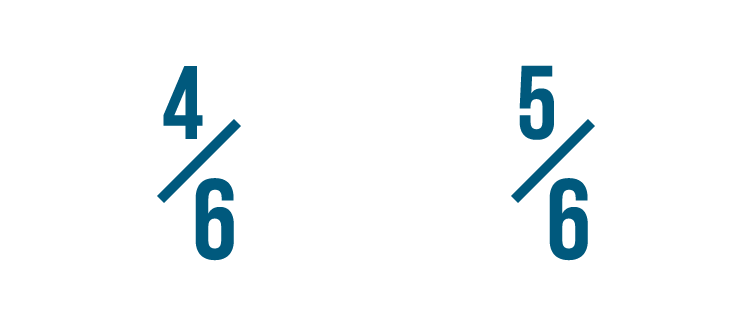
Before, we saw that fractions take two parts.
-
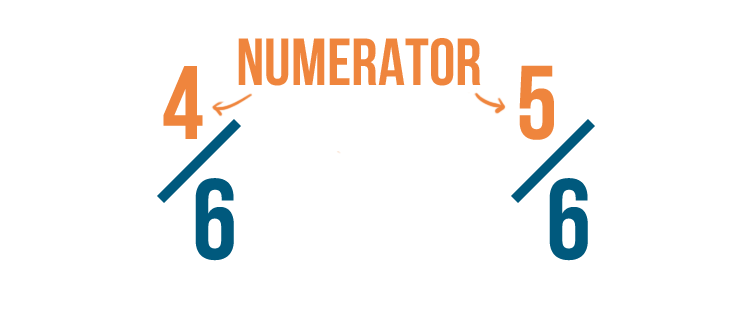
1 part is the superlative number, or numerator .
-
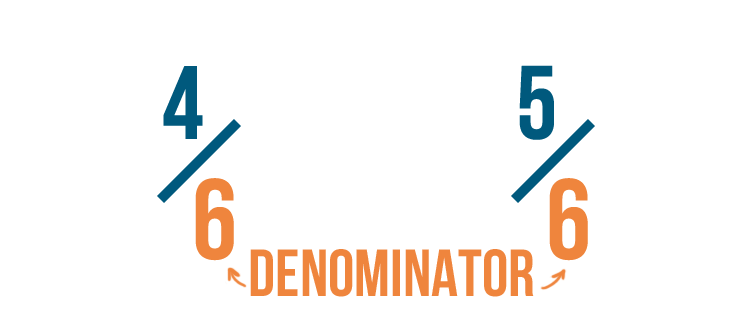
The other is the bottom number, or denominator .
-
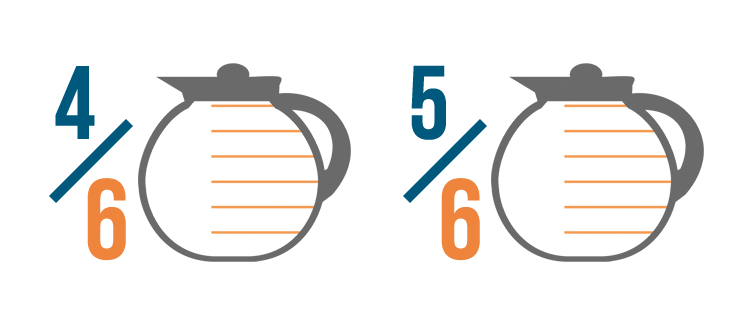
The denominator tells united states how many parts are in a whole.
-
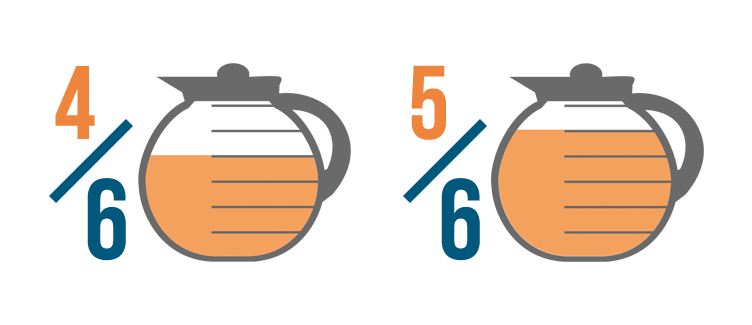
The numerator tells us how many of those parts nosotros have.
-
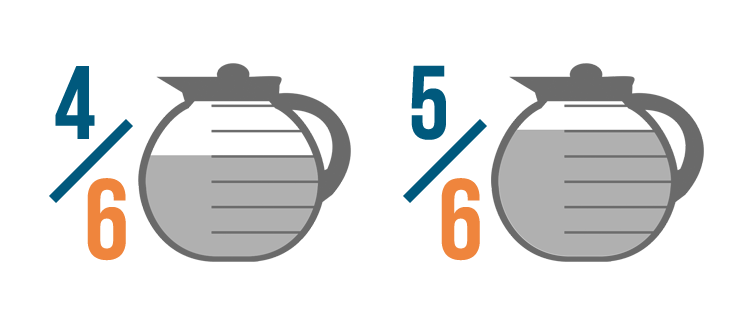
When fractions accept the same denominator, it means they're split into the same number of parts.
-
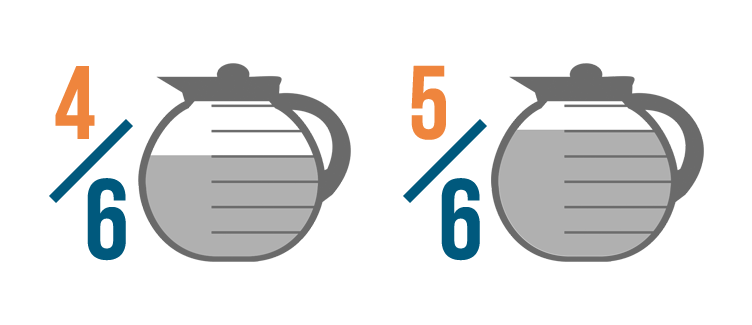
This ways nosotros can compare these fractions just by looking at the numerator.
-
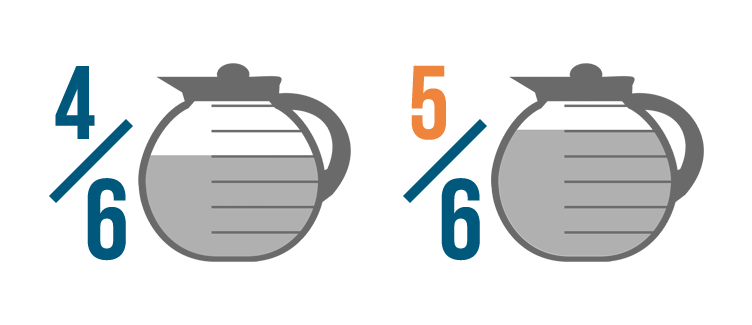
Here, 5 is more than than 4...
-
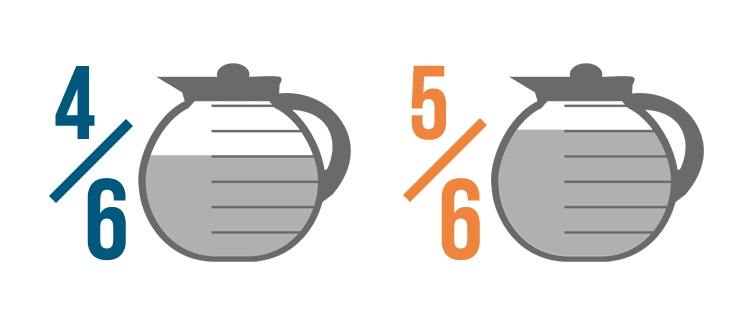
Hither, 5 is more 4...so we can tell that five/6 is more than than 4/6.
-
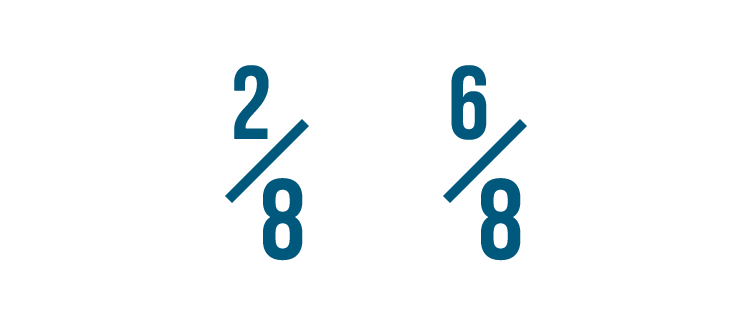
Let's look at another example. Which of these is larger: two/eight or 6/8?
-
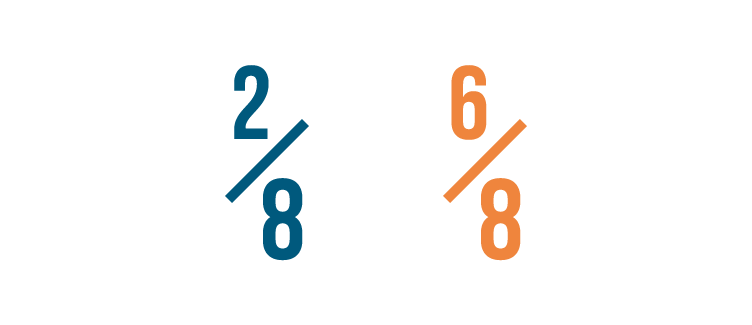
If y'all thought 6/viii was larger, you were right!
-
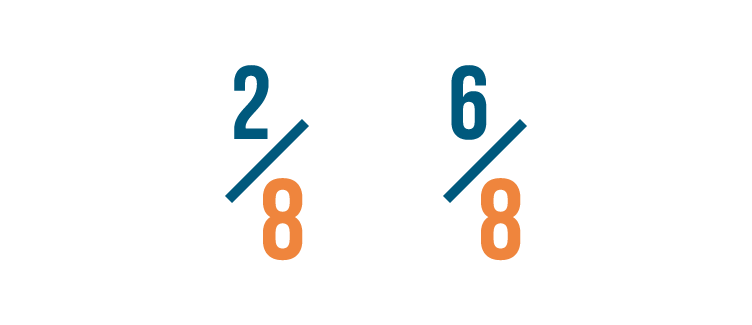
Both fractions take the same denominator.
-
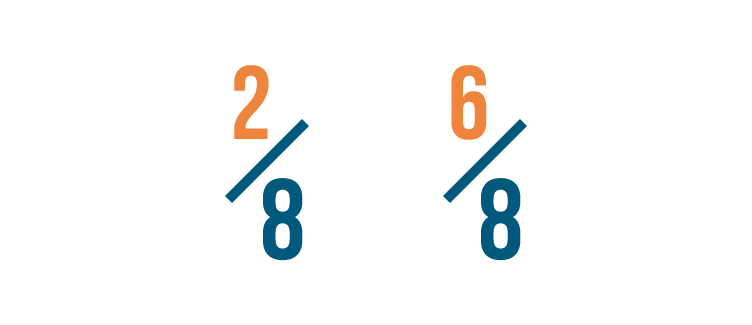
And then nosotros compared the numerators. 6 is larger than ii, and so six/8 is more than two/8.
-

As you lot saw, if two or more fractions have the same denominator, you tin compare them by looking at their numerators. Equally you tin see below, 3/4 is larger than one/4. The larger the numerator, the larger the fraction.

Comparing fractions with different denominators
On the previous folio, we compared fractions that accept the same bottom numbers, or denominators . Only you lot know that fractions tin can have whatsoever number equally a denominator. What happens when yous need to compare fractions with different bottom numbers?
For example, which of these is larger: two/3 or 1/5? It's difficult to tell just past looking at them. After all, two is larger than 1, just the denominators aren't the same.
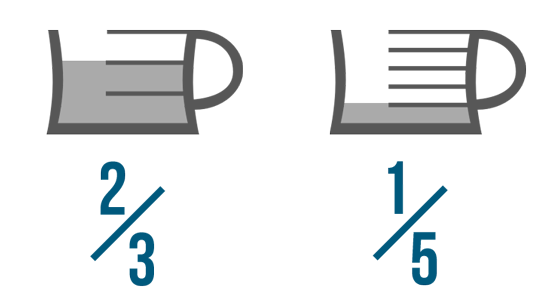
If you look at the picture, though, the difference is clear: ii/three is larger than 1/5. With an illustration, it was easy to compare these fractions, but how could we have done it without the picture?
Click through the slideshow to learn how to compare fractions with different denominators.
-

Permit's compare these fractions: 5/8 and four/6.
-
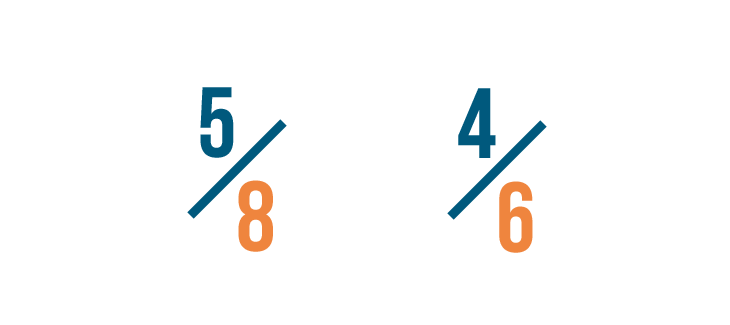
Earlier we compare them, nosotros demand to change both fractions and so they accept the same denominator, or bottom number.
-

First, nosotros'll discover the smallest number that can be divided by both denominators. We call that the lowest common denominator.
-
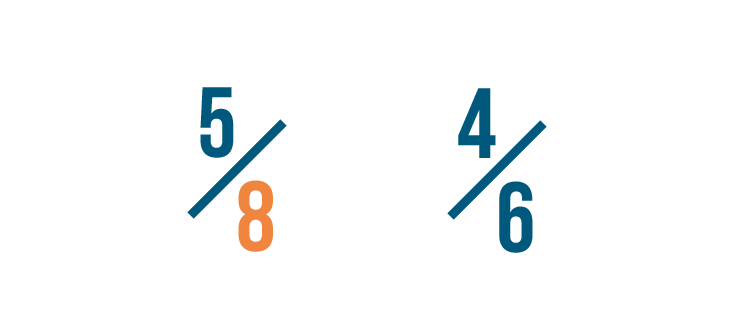
Our first pace is to find numbers that can exist divided evenly by 8.
-

Using a multiplication tabular array makes this easy. All of the numbers on the 8 row can be divided evenly by viii.
-

At present permit'due south look at our second denominator: 6.
-
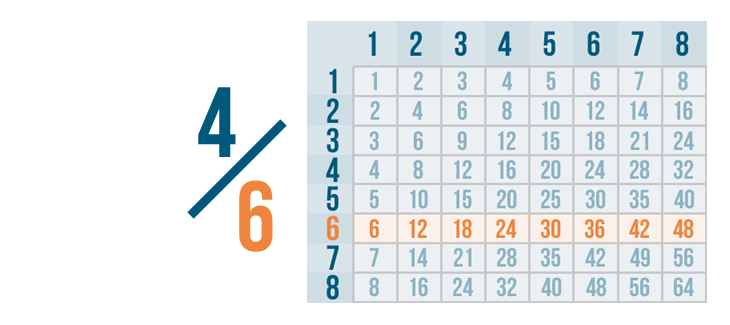
Nosotros can use the multiplication table again. All of the numbers in the six row can be divided evenly past 6.
-
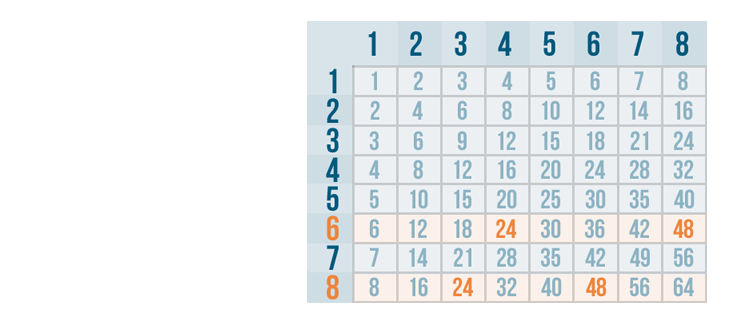
Allow's compare the ii rows. It looks like at that place are a few numbers that can exist divided evenly by both half-dozen and 8.
-

24 is the smallest number that appears on both rows, so it'due south the lowest common denominator.
-

At present we're going to change our fractions so they both have the same denominator: 24.
-

To practice that, nosotros'll take to change the numerators the same way we changed the denominators.
-

Permit's look at 5/8 again. In guild to change the denominator to 24...
-

Let's look at 5/8 again. In order to change the denominator to 24...nosotros had to multiply 8 by 3.
-
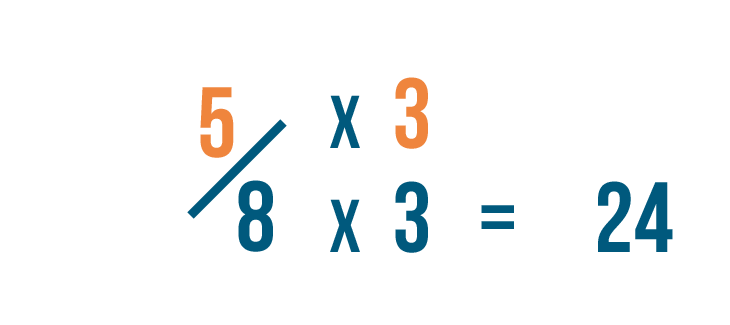
Since we multiplied the denominator past 3, nosotros'll as well multiply the numerator, or top number, by 3.
-
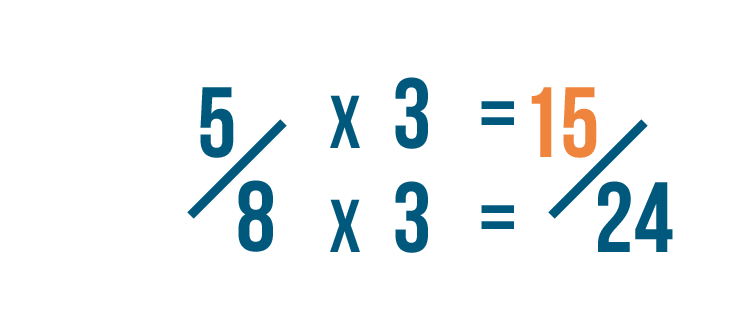
5 times iii equals fifteen. So we've changed v/8 into 15/24.
-
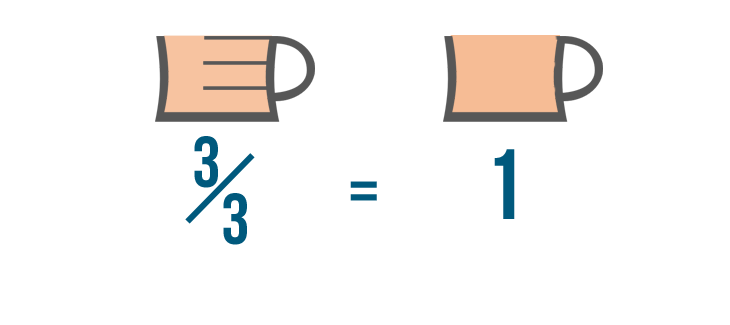
We can do that because whatsoever number over itself is equal to 1.
-
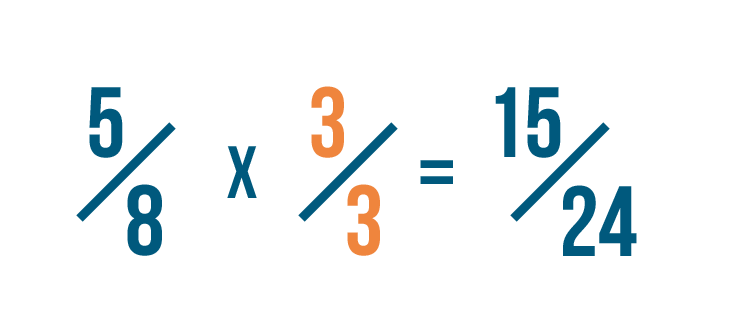
So when we multiply 5/viii by 3/iii...
-
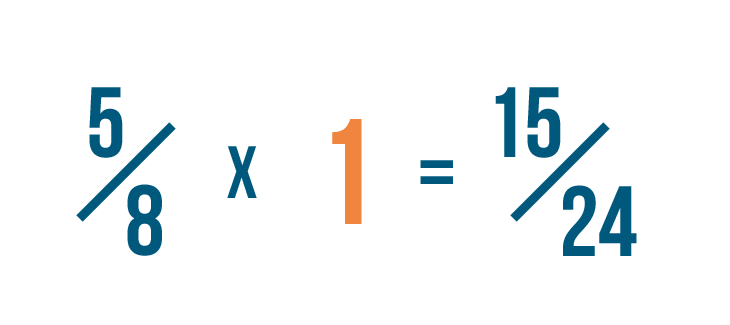
So when we multiply 5/8 by 3/3...we're really multiplying v/8 past 1.
-
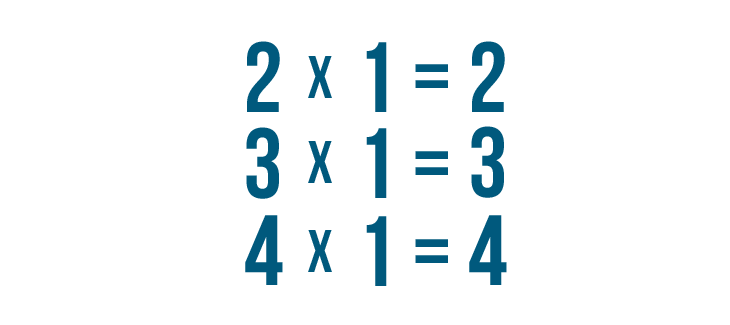
Since whatsoever number times 1 is equal to itself...
-
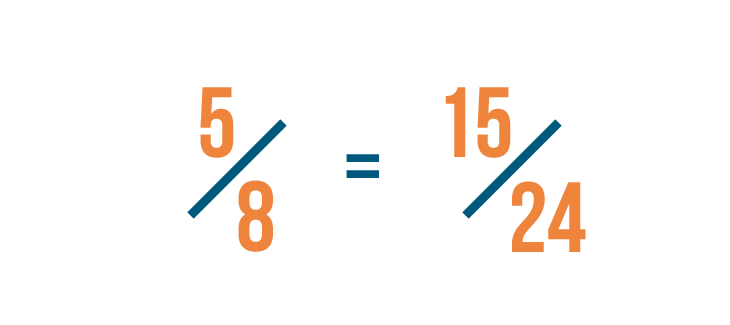
Since any number times 1 is equal to itself...nosotros can say that 5/8 is equal to 15/24.
-

Now we'll do the aforementioned to our other fraction: 4/vi. We likewise changed its denominator to 24.
-
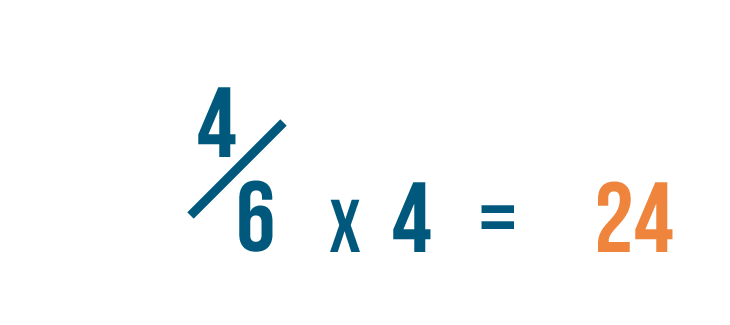
Our old denominator was half-dozen. To get 24, nosotros multiplied 6 past four.
-
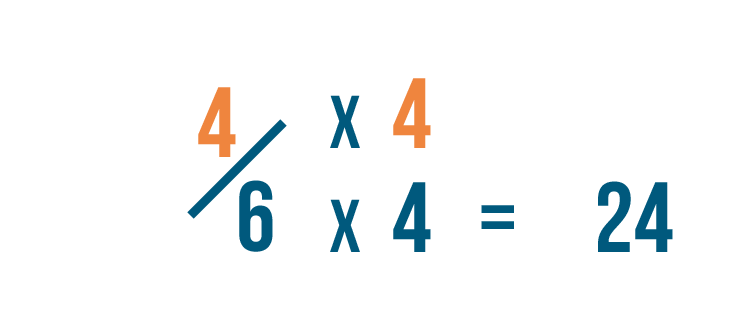
And then we'll likewise multiply the numerator by 4.
-
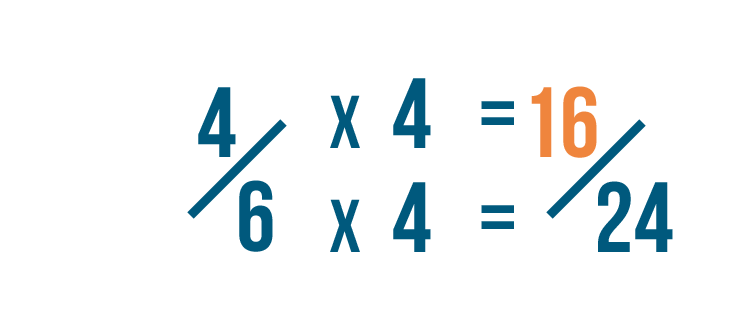
four times 4 is 16. Then four/6 is equal to xvi/24.
-
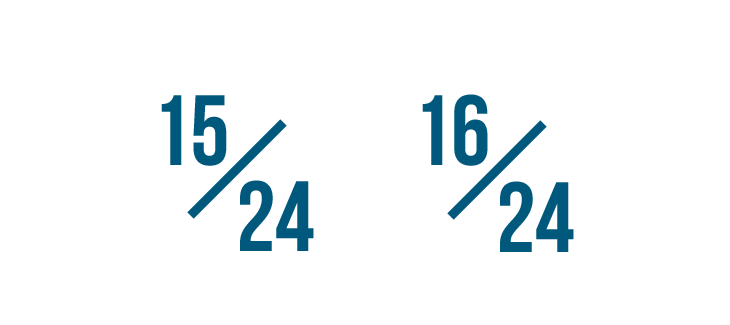
Now that the denominators are the same, we can compare the two fractions by looking at their numerators.
-
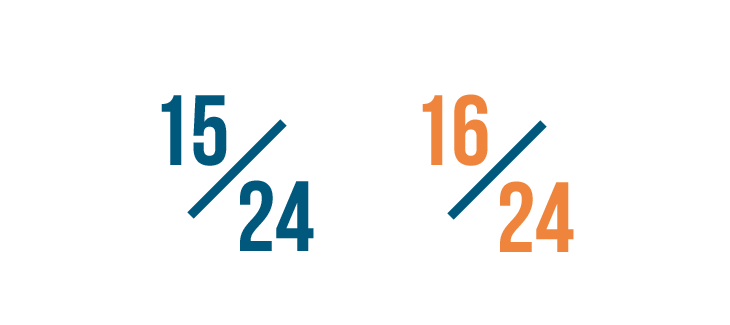
16/24 is larger than 15/24...
-
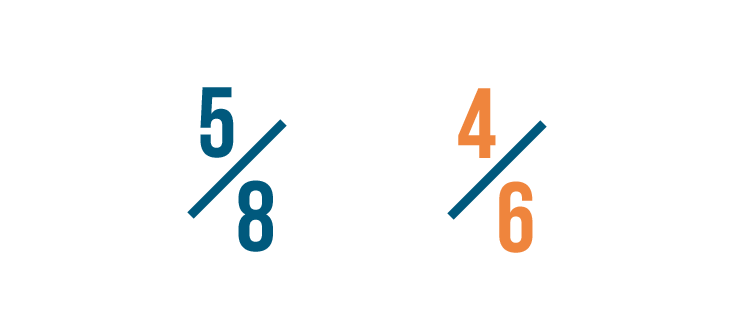
16/24 is larger than 15/24... and then 4/6 is larger than 5/eight.
-

Reducing fractions
Which of these is larger: 4/8 or i/2?
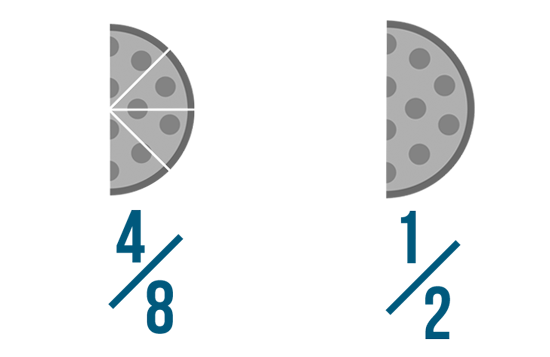
If you did the math or even just looked at the picture, you might take been able to tell that they're equal . In other words, 4/8 and 1/2 mean the same thing, even though they're written differently.
If four/8 means the same thing every bit 1/two, why not only call information technology that? One-half is easier to say than four-eighths, and for most people it's besides easier to empathise. After all, when you eat out with a friend, you split the bill in half, not in eighths.
If you write 4/8 as ane/2, you're reducing it. When we reduce a fraction, we're writing it in a simpler form. Reduced fractions are always equal to the original fraction.
We already reduced 4/8 to 1/2. If you wait at the examples beneath, you can see that other numbers can be reduced to 1/2 equally well. These fractions are all equal.
5/10 = 1/two11/22 = 1/two
36/72 = 1/2
These fractions have all been reduced to a simpler form besides.
iv/12 = 1/3fourteen/21 = 2/3
35/fifty = 7/10
Click through the slideshow to learn how to reduce fractions by dividing.
-

Let's try reducing this fraction: 16/20.
-
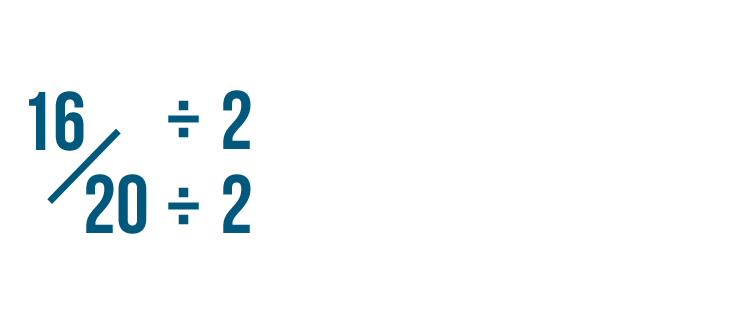
Since the numerator and denominator are fifty-fifty numbers, yous can divide them past ii to reduce the fraction.
-
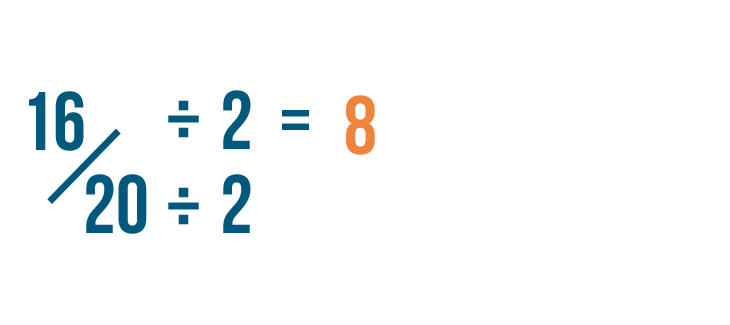
First, nosotros'll divide the numerator by ii. 16 divided by two is viii.
-
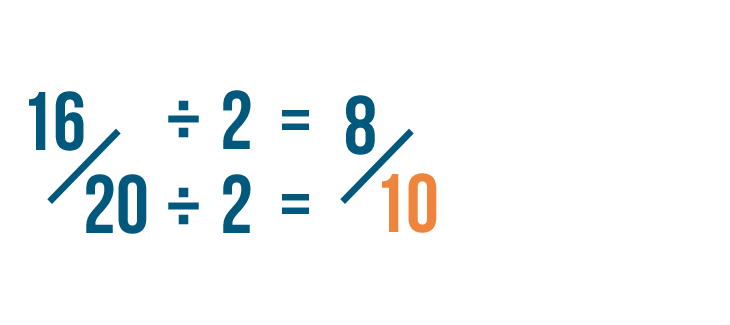
Next, we'll split the denominator by 2. twenty divided by ii is x.
-
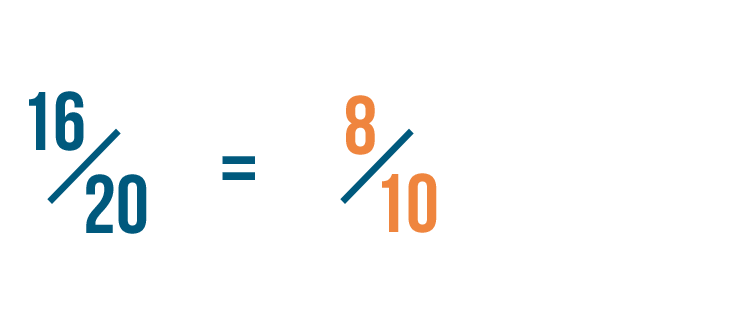
We've reduced 16/xx to 8/10. We could also say that 16/xx is equal to 8/10.
-
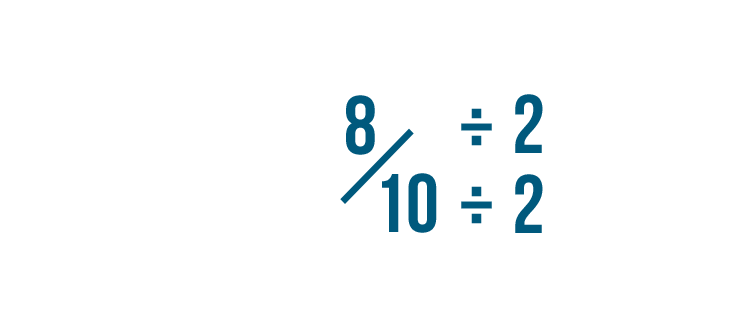
If the numerator and denominator can nonetheless be divided by 2, we can continue reducing the fraction.
-
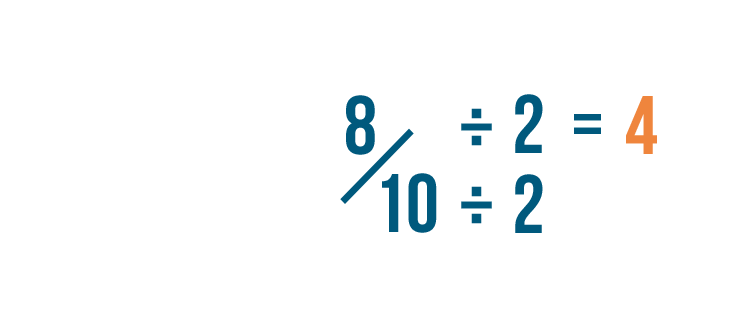
viii divided by ii is 4.
-
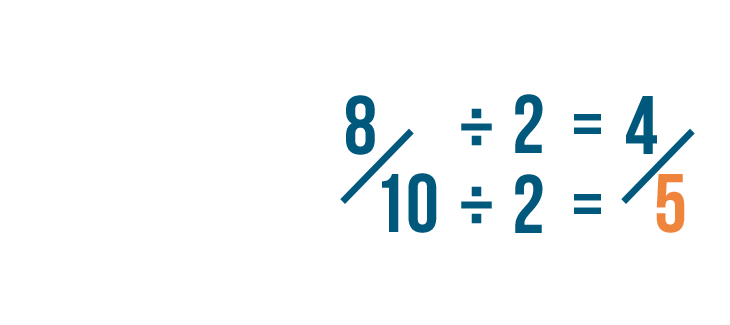
10 divided by 2 is five.
-

Since there's no number that 4 and five can exist divided by, we can't reduce 4/5 any further.
-
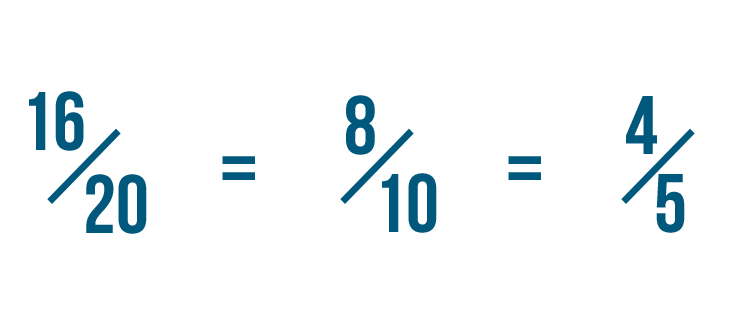
This means 4/5 is the simplest course of xvi/xx.
-
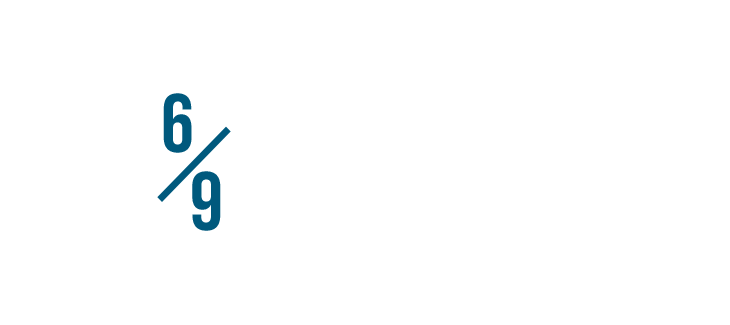
Let'southward try reducing another fraction: vi/9.
-
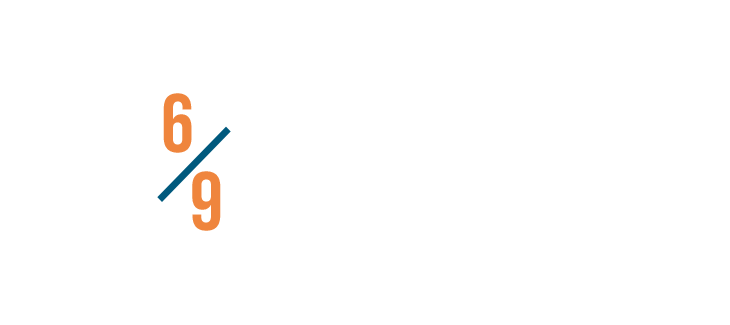
While the numerator is fifty-fifty, the denominator is an odd number, so we can't reduce past dividing by 2.
-

Instead, we'll demand to find a number that half-dozen and 9 can exist divided past. A multiplication table will make that number easy to find.
-

Let's discover half dozen and 9 on the same row. As you tin can meet, 6 and ix can both be divided by 1 and 3.
-

Dividing by 1 won't change these fractions, so we'll employ the largest number that vi and 9 can be divided by.
-
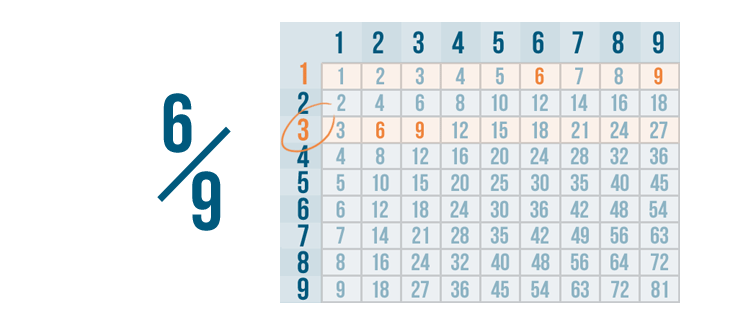
That'due south 3. This is called the greatest common divisor, or GCD. (You tin also call information technology the greatest mutual cistron, or GCF.)
-

3 is the GCD of half dozen and ix because it's the largest number they can be divided past.
-
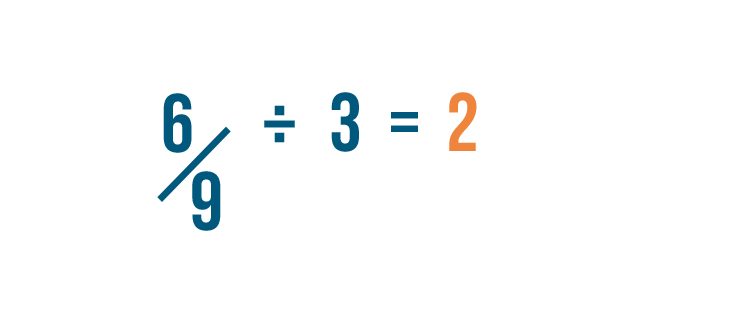
So we'll divide the numerator past 3. vi divided by 3 is 2.
-
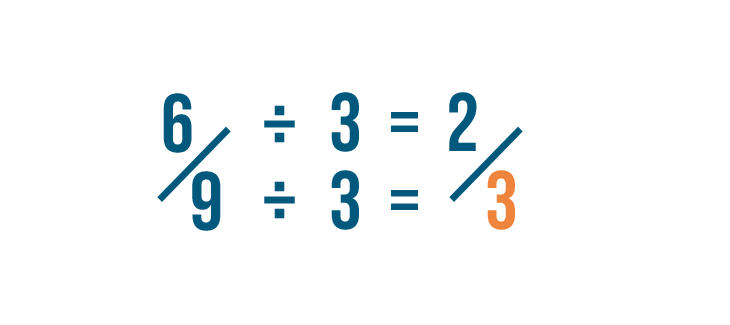
Then nosotros'll divide the denominator by 3. 9 divided past 3 is 3.
-
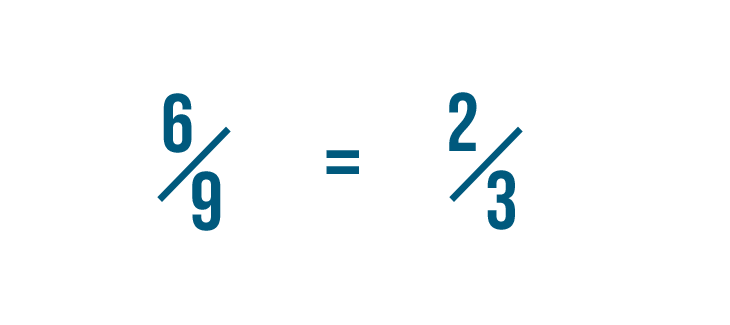
Now we've reduced 6/nine to two/three, which is its simplest form. We could also say that half dozen/9 is equal to 2/three.
-

Irreducible fractions
Non all fractions tin be reduced. Some are already as uncomplicated as they can exist. For example, you tin can't reduce 1/two because at that place's no number other than 1 that both 1 and 2 tin can be divided past. (For that reason, you can't reduce whatsoever fraction that has a numerator of 1.)
Some fractions that have larger numbers can't be reduced either. For instance, 17/36 tin can't be reduced considering there's no number that both 17 and 36 can be divided by. If y'all tin can't find any common multiples for the numbers in a fraction, chances are information technology's irreducible .
Try This!
Reduce each fraction to its simplest form.
Mixed numbers and improper fractions
In the previous lesson, you learned near mixed numbers. A mixed number has both a fraction and a whole number. An case is i 2/3. You'd read 1 ii/3 like this: ane and ii-thirds.
Another way to write this would exist 5/3, or five-thirds. These two numbers look different, but they're actually the aforementioned. 5/three is an improper fraction. This just ways the numerator is larger than the denominator.
At that place are times when y'all may adopt to use an improper fraction instead of a mixed number. It's easy to alter a mixed number into an improper fraction. Let'due south acquire how:
-

Let'due south convert 1 1/4 into an improper fraction.
-

First, we'll need to detect out how many parts make upwards the whole number: 1 in this example.
-
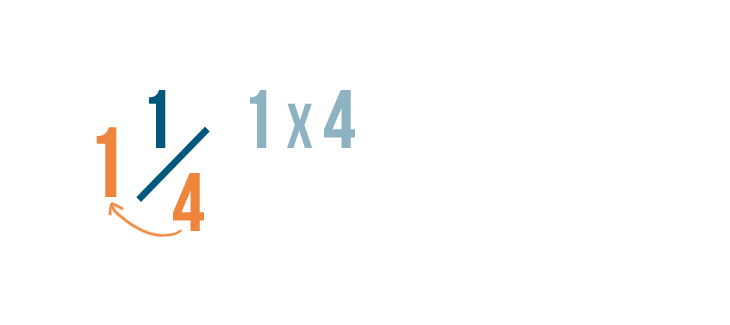
To do this, nosotros'll multiply the whole number, i, by the denominator, 4.
-

1 times iv equals 4.
-
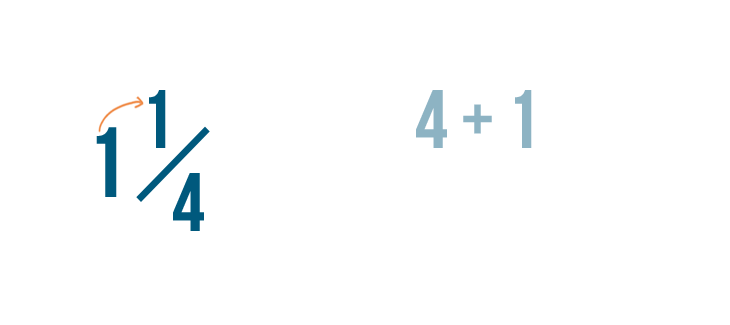
Now, let'southward add that number, 4, to the numerator, 1.
-
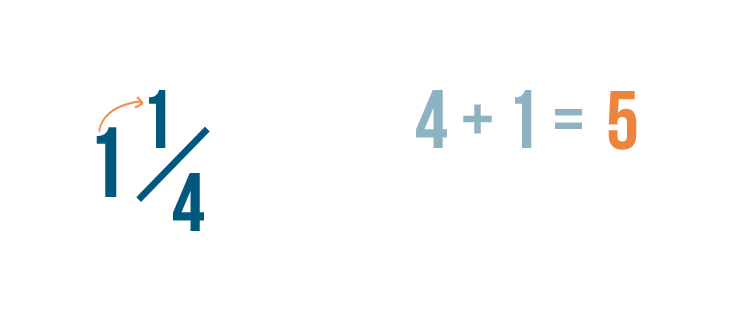
4 plus 1 equals 5.
-

The denominator stays the same.
-

Our improper fraction is 5/4, or five-fourths. So nosotros could say that i 1/4 is equal to 5/4.
-
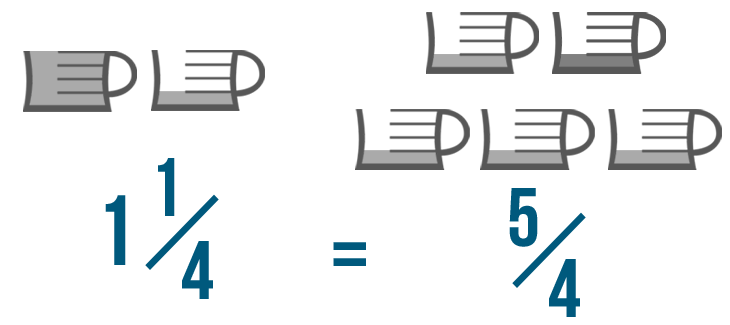
This means there are five one/4south in 1 ane/4.
-

Let's convert another mixed number: 2 2/5.
-
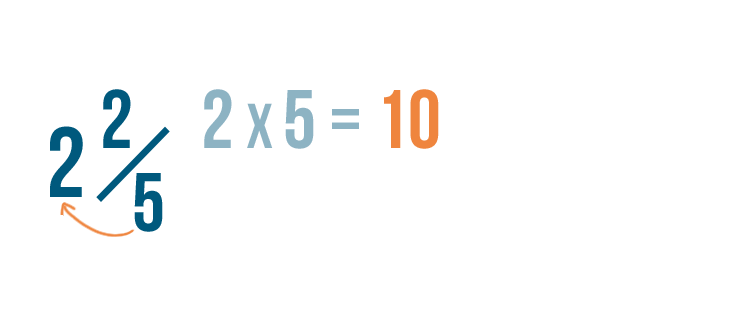
First, we'll multiply the whole number by the denominator. 2 times 5 equals 10.
-
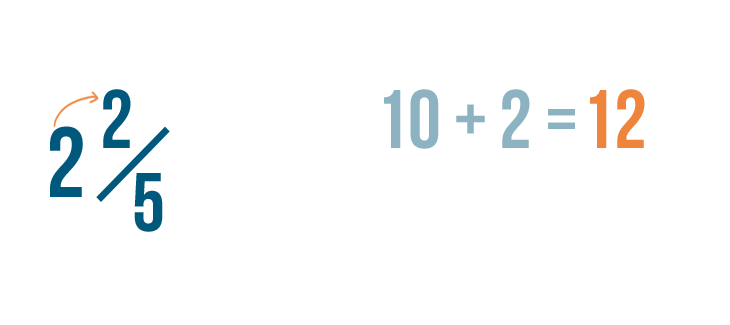
Side by side, nosotros'll add together ten to the numerator. 10 plus 2 equals 12.
-
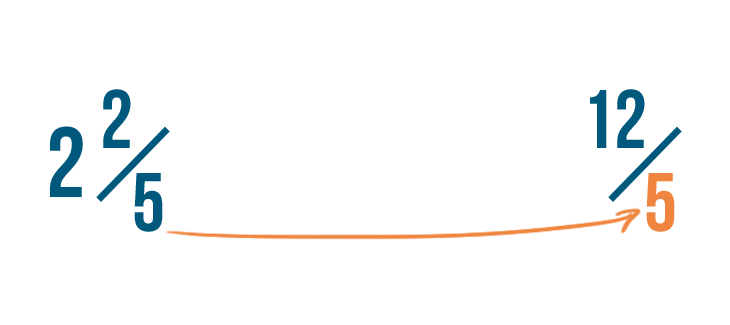
As always, the denominator will stay the same.
-
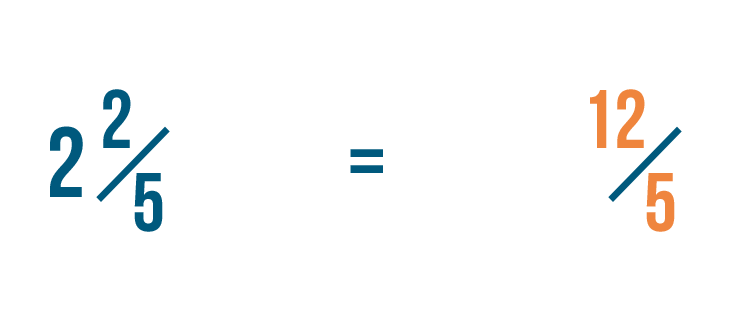
So 2 ii/v is equal to 12/v.
-

Endeavor This!
Endeavour converting these mixed numbers into improper fractions.
Converting improper fractions into mixed numbers
Improper fractions are useful for math problems that utilise fractions, as you'll acquire subsequently. However, they're besides more hard to read and sympathize than mixed numbers. For example, it'south a lot easier to picture 2 4/7 in your head than 18/7.
Click through the slideshow to learn how to alter an improper fraction into a mixed number.
-

Allow's plough 10/4 into a mixed number.
-

Yous tin can think of any fraction as a division problem. Just care for the line between the numbers like a division sign (/).
-
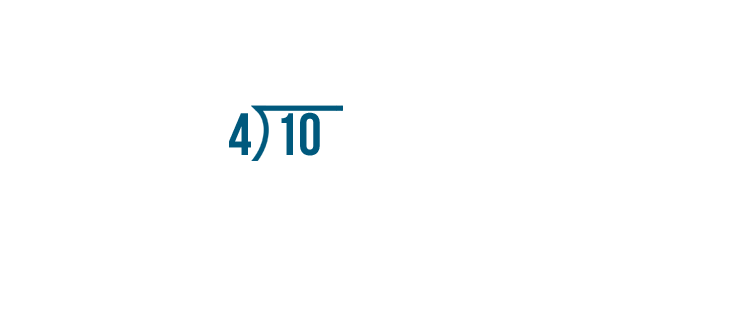
So nosotros'll split up the numerator, 10, by the denominator, iv.
-
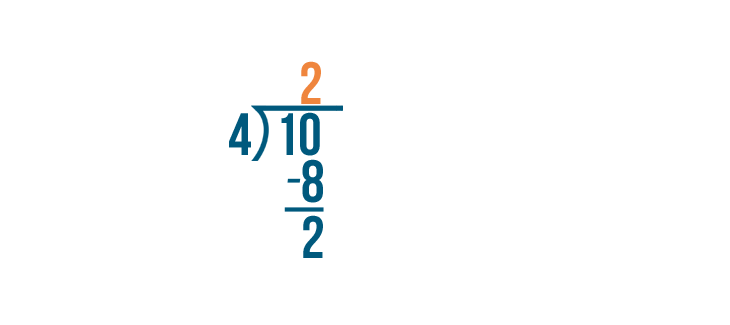
10 divided past 4 equals 2...
-
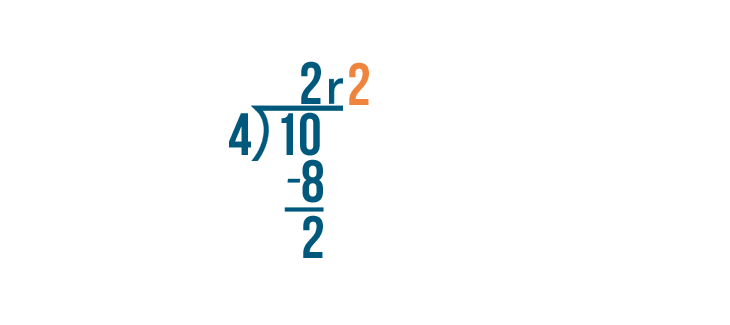
10 divided by iv equals 2... with a remainder of 2.
-
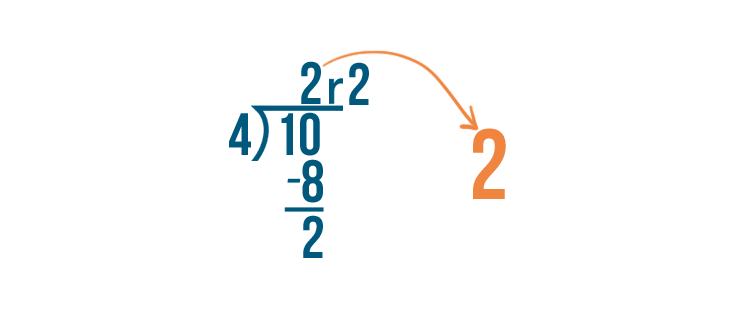
The answer, 2, will go our whole number because x tin be divided by 4 twice.
-

And the residual, 2, volition go the numerator of the fraction because nosotros take 2 parts left over.
-
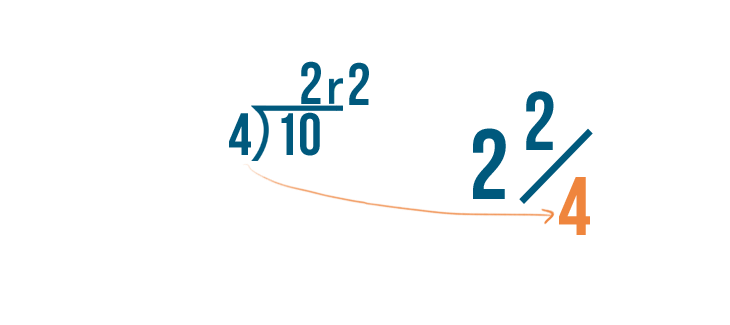
The denominator remains the aforementioned.
-
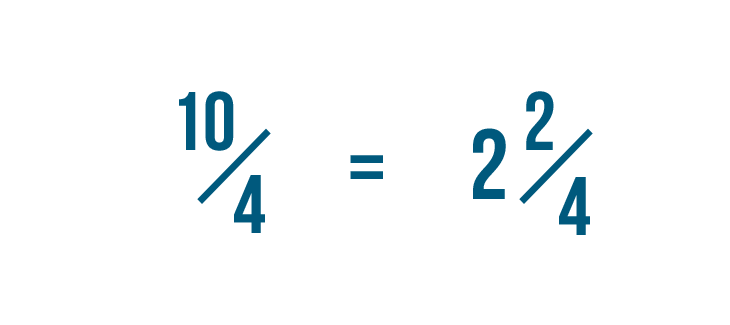
So 10/four equals ii 2/iv.
-

Let's endeavor another example: 33/iii.
-

We'll dissever the numerator, 33, by the denominator, three.
-
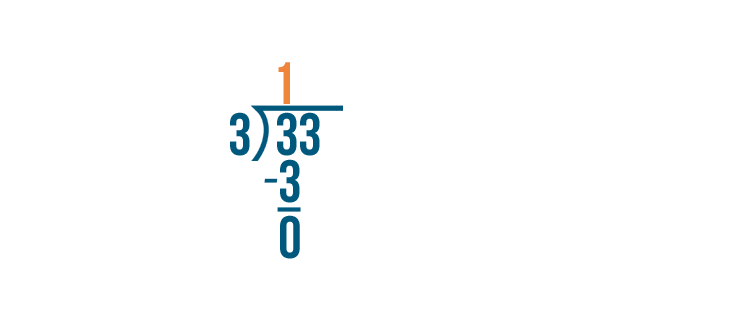
33 divided by 3...
-
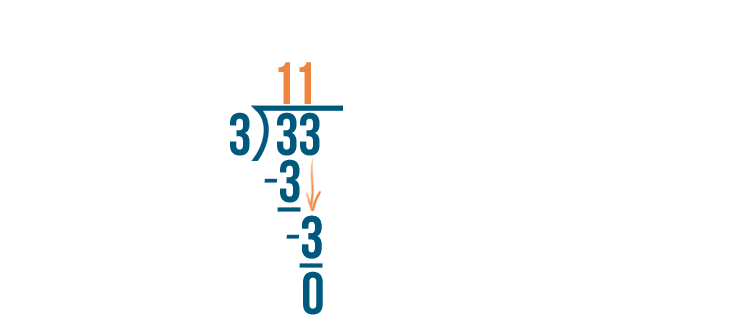
33 divided past iii... equals 11, with no remainder.
-

The answer, 11, volition become our whole number.
-
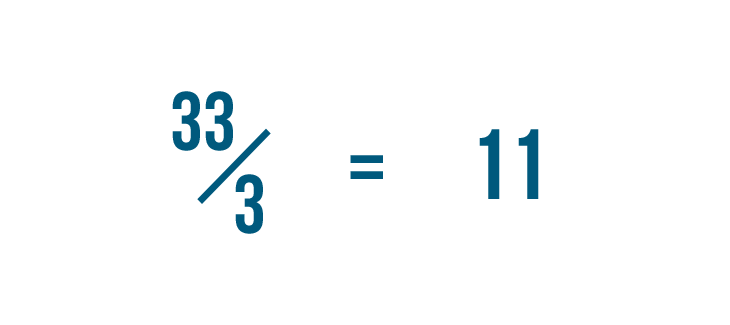
In that location is no remainder, so nosotros tin can see that our improper fraction was actually a whole number. 33/three equals 11.
-

Try This!
Try converting these improper fractions into mixed numbers.
/en/fractions/adding-and-subtracting-fractions/content/





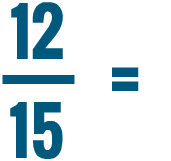
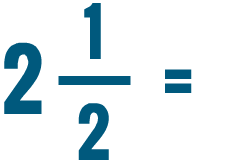
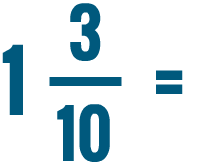



























































































0 Response to "Is 5/8 Smaller Than 1/4"
Post a Comment